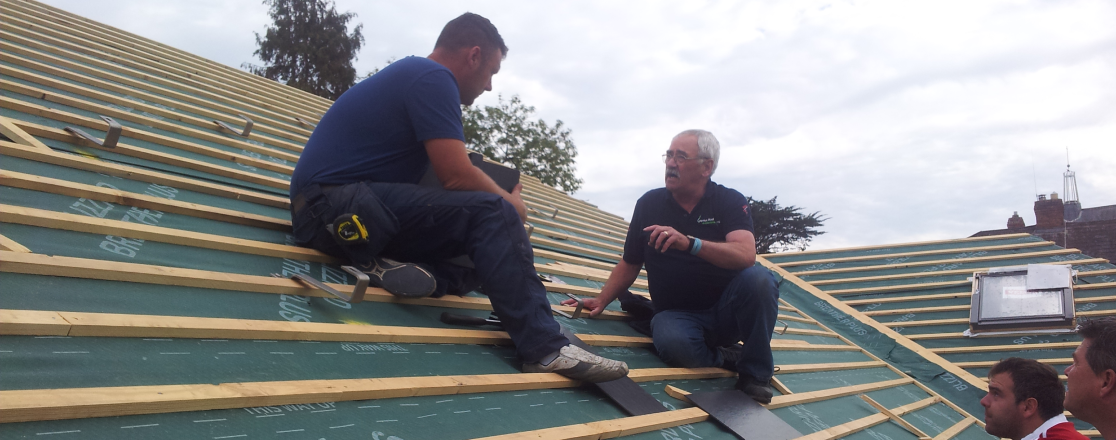Jimmy Hall
We were recently clearing out our old premises, which is single storey, to put it on the market. When Jemma and I had finished our conversation she said “sorry the moss on the roof is annoying me. I need to get a ladder and remove it’. The reason the moss is so prevalent on the roof Jemma was looking at is that it has solar panels which means the panels shade that area of the roof for some of the day from the sun. The same way as moss grows on north facing roofs as it thrives in damp and shaded places. I know this from 40 years of climbing on roofs, I have seen it with my own eyes. And it can grow, like on our roof, where the solar panels shade areas from the sun.
Drilling through roofing material
Every slate or tile that has been drilled through is shaded by a large panel, therefore the roofing material and the bracket are subject to the same wet and damp conditions as a north facing roof. They are breeding grounds for moss spores.
Moss spores are one-celled reproductive units that become airborne and can make their way onto a roof. There they will gather in spaces between the shingles and grow into moss. Once established, it absorbs rainwater like a sponge and can grow and spread across the roof.
Which is why I have always been opposed to drilling through roofing material and using silicone/mastic/rubber or anything else that is sold as a magic potion to water seal. I don’t trust it. It might hold for 1, 5 or 10 years if you’re lucky but there is a very real risk that moss spores will not only start to grow but will grow and separate the solution that has been used as a barrier for water to get through the drill hole.
As an experienced roofer I couldn’t imagine drilling through a slate. As a 75 year old rapidly losing my patience the very topic gets me frustrated. Recently I was watching a video on Youtube where the electrician installing the solar was asked in the comments what he thought about a commonly known system which involves drilling through the roofing material. “Not a fan. Doesn’t feel right to just screw through the roof in my view” was his answer. It was extremely reassuring to read this answer, we are moving in the right direction.
However, it is still being done and we are seeing more and more of these systems failing.
Below are photographs from a company who were tasked with rectifying an install using our SolarFlash® flashing kit to repair it.
